NEW ANTHROPOLOGIES OF EUROPE
MATTI BUNZL AND MICHAEL HERZFELD,
EDITORS
FOUNDING EDITORS
DAPHNE BERDAHL, MATTI BUNZL, AND MICHAEL HERZFELD,
JEWISH POLAND REVISITED
Heritage Tourism in Unquiet Places
Erica T. Lehrer
INDIANA UNIVERSITY PRESS
BLOOMINGTON & INDIANAPOLIS
This book is a publication of
Indiana University Press
Office of Scholarly Publishing
Herman B Wells Library 350
1320 East 10th Street
Bloomington, Indiana 47405 USA
iupress.indiana.edu
Telephone orders 800-842-6796
Fax orders 812-855-7931
2013 by Erica T. Lehrer
All rights reserved
No part of this book may be reproduced or utilized in any form or by any means, electronic or mechanical, including photocopying and recording, or by any information storage and retrieval system, without permission in writing from the publisher. The Association of American University Presses' Resolution on Permissions constitutes the only exception to this prohibition.

The paper used in this publication meets the minimum requirements of the American National Standard for Information Sciences-Permanence of Paper for Printed Library Materials, ANSI Z39.48-1992.
Manufactured in the United States of America
Cataloging information is available from the Library of Congress.
ISBN 978-0-253-00880-0 (cloth)
SBN 978-0-253-00886-2 (pbk)
ISBN 978-0-253-00893-0 (eb)
1 2 3 4 5 18 17 16 15 14 13
FOR MY PARENTSAND THEIR NACHES.
AND FOR ERYKA
MAY SHE GROW TO KNOW THE BEST OF
POLISHNESS AND JEWISHNESS ALIKE.
Is it only the blood and ashes of the victims that will become the true bond joining Poland and the Jewish people? My impression is that this will not be the only bond but that, with the passing of time, the evidence of other bonds will become increasingly visible. Willingly or unwillingly, Poland will never be able to forget the Jews.
Aleksander Hertz, The Jews in Polish Culture
PROLOGUE: SCENE OF ARRIVAL
December 1, 1998
Krakw, Poland
8:45 PM
I climb the stairs in Mateusz's (temporarily my) shiny, as-yet-ungraffitied apartment block and step through the steel-reinforced, triple-bar winding-bolt door (Israeli, Mateusz told me later, an almost prurient glint in his eye). On a nearby cabinet sits a lace doily on which two knitted yarmulkes (skull-caps) are decorously propped. They lean against a fragment of black granite tombstone in which Hebrew letters are chiseled; he has gilded them since my last visit. An old wooden packing box from a Jewish margarine concern sits on top of the refrigerator, emblazoned with a menorah and product information in Polish and Hebrew. Among antique Jewish books on the bookshelf are nestled a yorzeit (memorial) candle in a mass-produced Israeli tin can and a Hebrew-language Coke bottle. It's a mindfully atavistic aesthetic. It is elegant and cozy. It is also a bit strange.
Mateusz is not Jewish. But there was a time he wished he were. I am. I spent a lot of my life wishing I weren't, trying to escape a darkness and discomfort that were the principal inheritance of my line of Jewish descent. We met each other following a path of shards from the broken vessel of European Jewishness, shattered in this part of the world in our parents' and grandparents' generations. The tangible debris was strewn in fields with new owners; less concrete fragments were embedded in unlikely bodies.
I chuckle at the surrounding dcor (after many trips to Poland, I can finally laugh), flip up the glowing screen of my laptop, click to the fresh folder I had prepared entitled Fieldnotes, and begin my scene of arrival in the field. I think of Malinowskifrom Krakow, no lessfather of modern anthropological fieldwork methodology. Yet my native informants, the Poles whose imponderabilia I am here to investigate, have assembled such displays of Jewish culture as part of their own cross-cultural expeditions. As it turns out, I am equally their native. I am reminded of my very first trip to Poland in early 1990. For an American Jewabruptly confronting her nationally and culturally cultivated blind spotsit was astounding in every way. First of all, it existed in color. There were young people, happy people. Flowers grew. But most of all, I recall discovering a menorahone of the few Jewish ritual objects my family still usedon display in a Polish Catholic home. I ask its owner what it was and why he had it, and received a one-word response: Artifact.
This word, uttered in this place at this time by this person, brought up a host of questions, none of them comfortable. Where did he get it? What does it mean to him? Is he really not Jewish? Does he deserve to have it? And, more quietly, but perhaps the real root of my discomfort, I felt the fineness of the line that separated his relationship to the menorah from mine. For me it was only barely alive, as my post-Holocaust, assimilationist American upbringing left me without the universe of ritual, meaning, and social ties that would animate it. But surely (my gut prodded me) a cultural world emanating however shallow a breath is still a world away from one in which the menorah would be an artifact (isn't it?). Surely I had a claim to that menorah, even if only as a relic, that this Polish Catholic man, however hospitable and generous, did not possessdidn't I?
My journey to Poland would put me in the company of tens of thousands of (mostly) American and Israeli Jews who would make similar trips that decade, unbeknownst to me at the time. The question of the Jewish artifact, and larger ones of cultural ownership and sharing, destruction and recovery, memory and desire that it provoked, kept me coming back to Poland. While my renewed and inquisitive relationship to this place made me something of an anomaly among the masses of Jewish visitors, for whom visiting Poland is generally a one-time, pre-scripted, and self-consciously negative ritual, I also found that I was not completely alone. There were a few other Jews who lingered, a few for whom Poland felt like a truncated limb they couldn't go on without. But wherever I went in Poland in search of Jewishness, I also found Poles on their own searches. This overlap of searches, of losses, of longings for a Polish-Jewish place, is at the center of this story.
ACKNOWLEDGMENTS
I am indebted to many people for their support over my many years of anthropological education, field research, and the writing of this book.
First, my teachers and mentors: Jon Andelson at Grinnell College in Iowa inspired me to become an anthropologist with his enthusiasm, kindness, and nurturing instruction in the joys of theoretical thinking. His own teacher (and later mine) at the University of Michigan, the late Skip Rappaport, remains another role model for anthropology as a humane and humanistic discipline; he suggested to me the provocative if unpopular idea that if one ethnic group imagines itself to have cohabitated amicably with another in the past, perhaps they will be better equipped to do so in the future. Also at Michigan, Crisca Bierwert, Tom Fricke, Conrad Kottak, Bruce Mannheim, and Jennifer Robertson each opened my eyes to new ways of thinking about culture.
Janet Hart responded to my fraught e-mails from the field with equal parts reassurance that my feelings of chaos and confusion meant that I was a real anthropologist doing exactly as I should, and admonition (after graciously reading some of my field notes) to please not get into cars with any more crazy drivers. During the writing process, Andrew Shryock was a wry, sage, and welcoming voice, with an unusually open office door and a refreshing honesty about academia. His ability to do both fieldwork and public cultural work, and write brilliantly about both, remains an inspiration. Don Seeman, friend, mentor, and colleague, is a rare model of expertise in two different analytical worldsanthropology and Judaismand he infuses each with the other in rich and courageous ways. He looked on my project with particular engagement, stressing the importance of being true to one's vision and reminding me that he would be applying his own to mine when he would review this book. Barbara Kirshenblatt-Gimblett, whose work I had long admired, graciously agreed to serve as an external committee member. She is a force of nature, a one-woman institution, a connecter of people, and a generous mentor as I continue to follow paths of cultural inquiry and practice she has blazed. Ruth Behar, my main graduate advisor, gave meand a cohort of other aspiring ethnographerspermission to examine the vast, generally unspoken sea of emotions that much ethnography traverses in its creation. She provided an example of professional possibility, blurring boundaries, exploring creative collaborations, and writing beautifully. If not for her, I never could have imagined the career I now have.

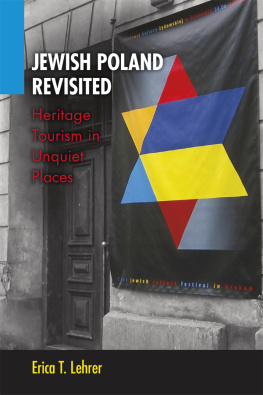

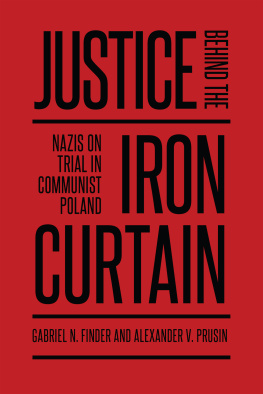
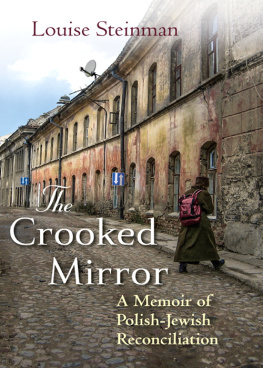
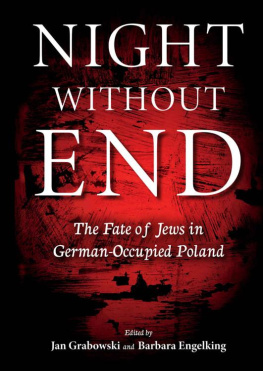
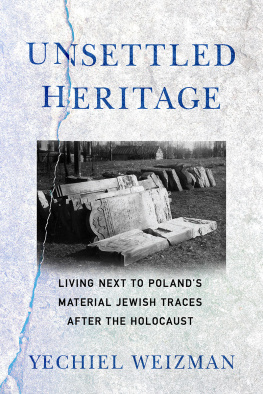

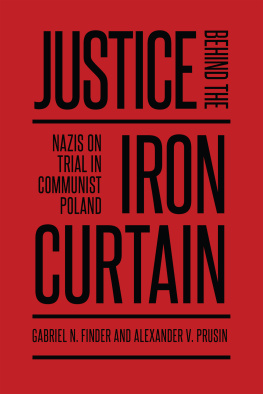
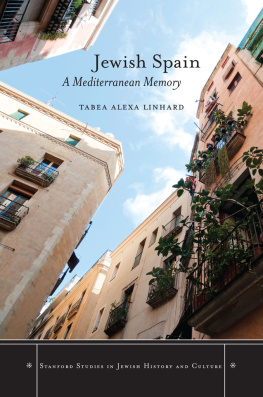
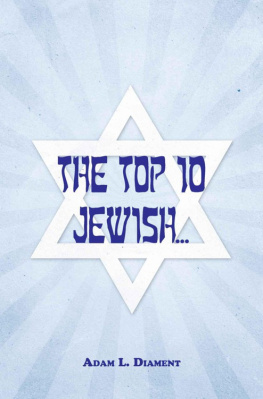
 The paper used in this publication meets the minimum requirements of the American National Standard for Information Sciences-Permanence of Paper for Printed Library Materials, ANSI Z39.48-1992.
The paper used in this publication meets the minimum requirements of the American National Standard for Information Sciences-Permanence of Paper for Printed Library Materials, ANSI Z39.48-1992.